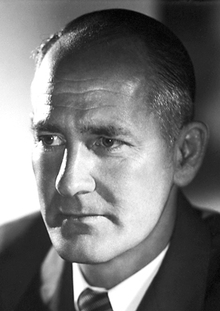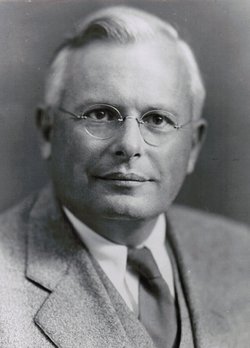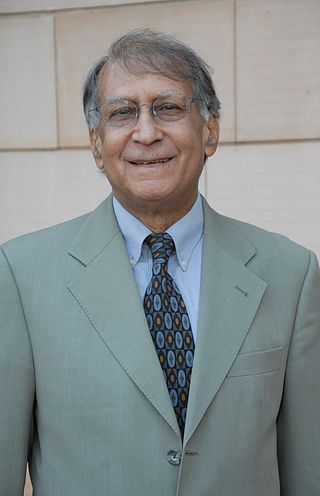Related Research Articles

Barbara McClintock was an American scientist and cytogeneticist who was awarded the 1983 Nobel Prize in Physiology or Medicine. McClintock received her PhD in botany from Cornell University in 1927. There she started her career as the leader of the development of maize cytogenetics, the focus of her research for the rest of her life. From the late 1920s, McClintock studied chromosomes and how they change during reproduction in maize. She developed the technique for visualizing maize chromosomes and used microscopic analysis to demonstrate many fundamental genetic ideas. One of those ideas was the notion of genetic recombination by crossing-over during meiosis—a mechanism by which chromosomes exchange information. She produced the first genetic map for maize, linking regions of the chromosome to physical traits. She demonstrated the role of the telomere and centromere, regions of the chromosome that are important in the conservation of genetic information. She was recognized as among the best in the field, awarded prestigious fellowships, and elected a member of the National Academy of Sciences in 1944.

George Wells Beadle was an American geneticist. In 1958 he shared one-half of the Nobel Prize in Physiology or Medicine with Edward Tatum for their discovery of the role of genes in regulating biochemical events within cells. He also served as the 7th President of the University of Chicago.

George Ledyard Stebbins Jr. was an American botanist and geneticist who is widely regarded as one of the leading evolutionary biologists of the 20th century. Stebbins received his Ph.D. in botany from Harvard University in 1931. He went on to the University of California, Berkeley, where his work with E. B. Babcock on the genetic evolution of plant species, and his association with a group of evolutionary biologists known as the Bay Area Biosystematists, led him to develop a comprehensive synthesis of plant evolution incorporating genetics.
Marcus Morton Rhoades was an American cytogeneticist.
John F. Doebley is an American botanical geneticist whose main area of interest is how genes drive plant development and evolution. He has spent the last two decades examining the genetic differences and similarities between teosinte and maize and has cloned the major genes that cause the visible differences between these two very different plants.
Milislav Demerec was a Croatian-American geneticist, and the director of the Department of Genetics, Carnegie Institution of Washington [CIW], now Cold Spring Harbor Laboratory (CSHL) from 1941 to 1960, recruiting Barbara McClintock and Alfred Hershey.
Edgar Shannon Anderson was an American botanist. He introduced the term introgressive hybridization and his 1949 book of that title was an original and important contribution to botanical genetics. HIs work on the transfer and origin of adaptations through natural hybridization continues to be relevant.
Donald Forsha Jones was a United States maize geneticist and practical corn breeder at the Connecticut Agricultural Experiment Station, New Haven. Beginning at the station in 1914, he made high-yielding hybrid corn practical by his invention of the double-cross hybrid.
Ronald L. Phillips is an American biologist and a Regents Professor at the University of Minnesota. In 1985 he was elected a fellow and the American Association for the Advancement of Science and in 1991 he was elected to the National Academy of Sciences.
Edward Murray East was an American plant geneticist, botanist, agronomist and eugenicist. He is known for his experiments that led to the development of hybrid corn and his support of 'forced' elimination of the 'unfit' based on eugenic findings. He worked at the Bussey Institute of Harvard University where he performed a key experiment showing the outcome of crosses between lines that differ in a quantitative trait.

Joachim Wilhelm "Jo" Messing was a German-American biologist who was a professor of molecular biology and the fourth director of the Waksman Institute of Microbiology at Rutgers University.
Herschel Lewis Roman was a geneticist famous for popularizing the use of yeast in genetic research.

Maize, also known as corn in North American and Australian English, is a cereal grain first domesticated by indigenous peoples in southern Mexico about 10,000 years ago. The leafy stalk of the plant produces pollen inflorescences and separate ovuliferous inflorescences called ears that when fertilized yield kernels or seeds, which are fruits. The term maize is preferred in formal, scientific, and international usage as the common name because this refers specifically to this one grain whereas corn refers to any principal cereal crop cultivated in a country. For example, in North America and Australia corn is often used for maize, but in England and Wales it can refer to wheat or barley, and in Scotland and Ireland to oats.
The Genetics Society of America (GSA) is a scholarly membership society of more than 5,500 genetics researchers and educators, established in 1931. The Society was formed from the reorganization of the Joint Genetics Sections of the American Society of Zoologists and the Botanical Society of America.
William Lacy Brown was an American geneticist notable for breeding programs in maize, sorghum, soybeans and wheat. He was president, chairman and chief executive of Pioneer Hi-Bred International. He was also a director of the Rockefeller Foundation's advisory committee on maize. Brown was elected to the National Academies of Science. The National Academies Press said that Brown "made significant and lasting contributions to increasing and stabilizing food production worldwide".

Lowell Fitz Randolph was an American scientist, in the field of genetics, botany and horticulture. He was a Cornell University graduate who became Professor of Botany and was also employed as an associate cytologist for the United States Department of Agriculture. He was also an avid iris collector and wrote a book on the Iris genus. He carried out important research into plant chromosomes of iris, orchid genus and corn plants. He was sometimes known as "Fitz" by his many friends and associates.

Harley Harris Bartlett was an American botanist, biochemist, and anthropologist. He was an expert in tropical botany and an authority on Batak language and culture. The standard author abbreviation Bartlett is used to indicate this person as the author when citing a botanical name.

Surinder Mohan (Suri) Sehgal is an Indian-American philanthropist with a long career as a crop scientist, seedsman, entrepreneur, and leading global hybrid seed industry expert. His research and professional successes in the areas of plant breeding and genetics, ag biotechnology, intellectual property, business management, and seed industry development were carried out in executive capacities in several companies in the United States, Belgium, and Germany. After the divestment of a group of four seed companies that Sehgal founded and ran with his wife, Edda Sehgal, the couple created two nonprofit organizations to promote rural development in Suri's country of origin: Sehgal (Family) Foundation in 1998 in the US, and S M Sehgal Foundation in India. The foundation focuses on water security, food security, and social justice, particularly empowerment. A proponent of corporate social responsibility and environmental sustainability, Sehgal has also provided support individually and through the foundations for projects related to agriculture research, the preservation of biodiversity and the conservation of natural resources.
James A. Birchler is an American biologist who is currently Curators' Professor at University of Missouri where he studies gene dosage, polyploidy, and cytogenetics in both maize and drosophila. In 2002 he was named a fellow of the American Association for the Advancement of Science. and in 2011 he was elected to the National Academy of Sciences. In 2017 he was named the SEC Professor of the Year.
Paul Weatherwax (1888–1976) was an American botanist, professor of botany, and botanical illustrator.
References
- ↑ Fowler, Gene (28 July 1989). "Paul Mangelsdorf, Botanist, 90; Tracked Corn to Primitive Maize". NY Times.
- ↑ Proceedings of the American Philosophical Society, Vol. 135, No. 3 (Sep., 1991), pp. 469-472
- ↑ Birchler, James A. (2014). "Paul Christoph Mangelsdorf, 1899–1989: A Biographical Memoir" (PDF). National Academy of Sciences.
{{cite journal}}: Cite journal requires|journal=(help) - ↑ Birchler, James A. (2014). "Paul Christoph Mangelsdorf, 1899–1989: A Biographical Memoir" (PDF). National Academy of Sciences.
{{cite journal}}: Cite journal requires|journal=(help) - ↑ A Lifetime in the Quest for the Origins of Corn* by Surinder M. Seghal" in Maize Genetics and Breeding in the 20th Century edited by Peter A. Peterson, Angelo Bianchi
- ↑ Kingsbury, Noel (2009). Hybrid: The History and Science of Plant Breeding . University of Chicago Press.
- ↑ "Paul Christoph Mangelsdorf". American Academy of Arts & Sciences. Retrieved 2023-01-19.
- ↑ "Paul C. Mangelsdorf". www.nasonline.org. Retrieved 2023-01-19.
- ↑ "APS Member History". search.amphilsoc.org. Retrieved 2023-01-19.
- ↑ Past Officers of the ASN
- ↑ "Past and Present GSA Officers, Genetics Society of America". Archived from the original on 2018-12-04. Retrieved 2014-09-06.
- ↑ Society Officers, Soc. for Economic Botany
- ↑ International Plant Names Index. Mangelsd.